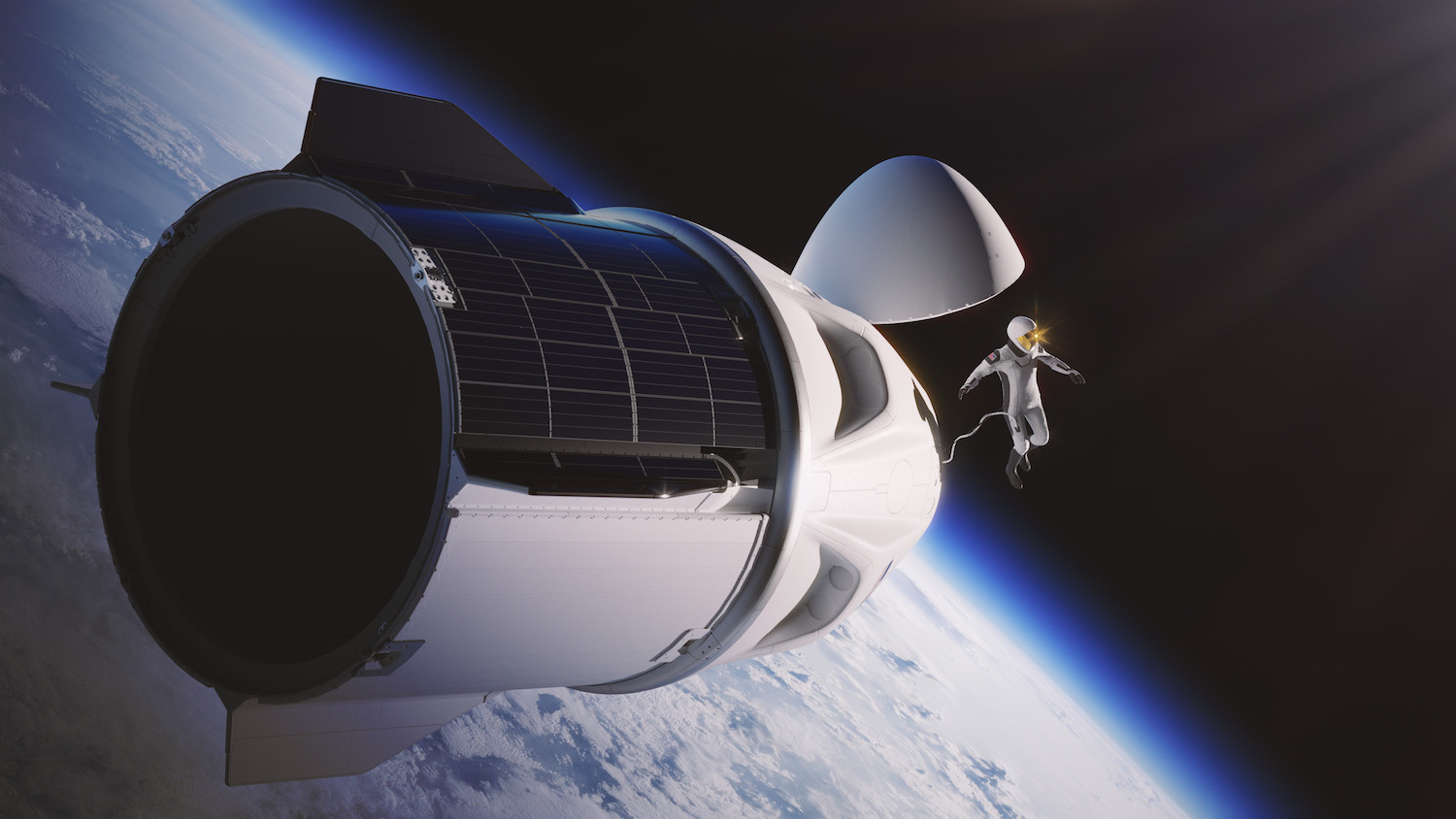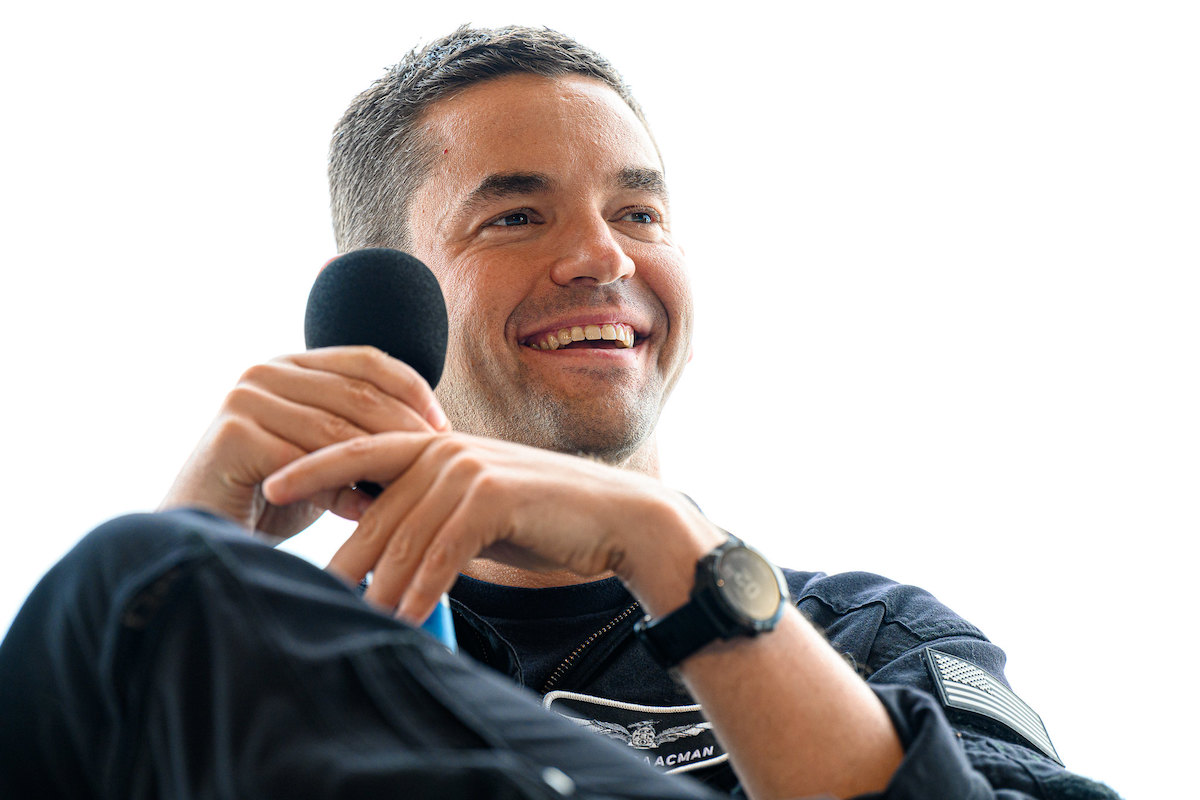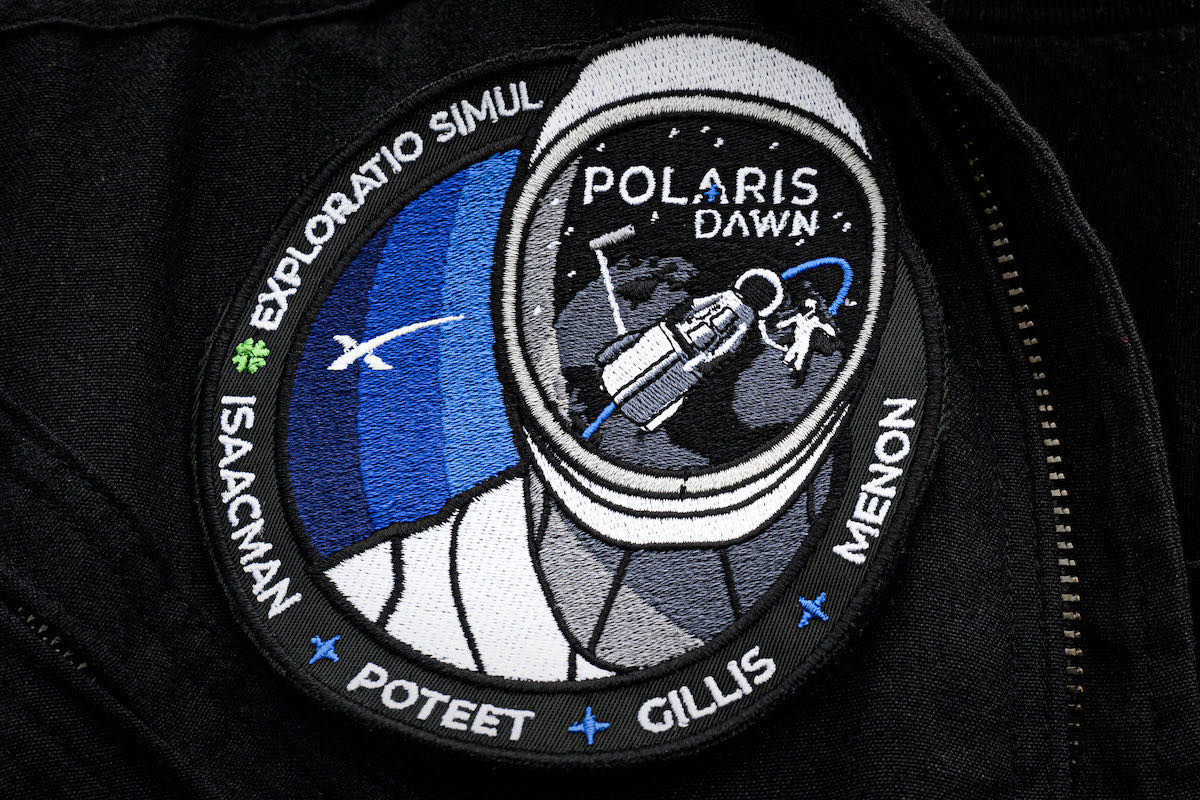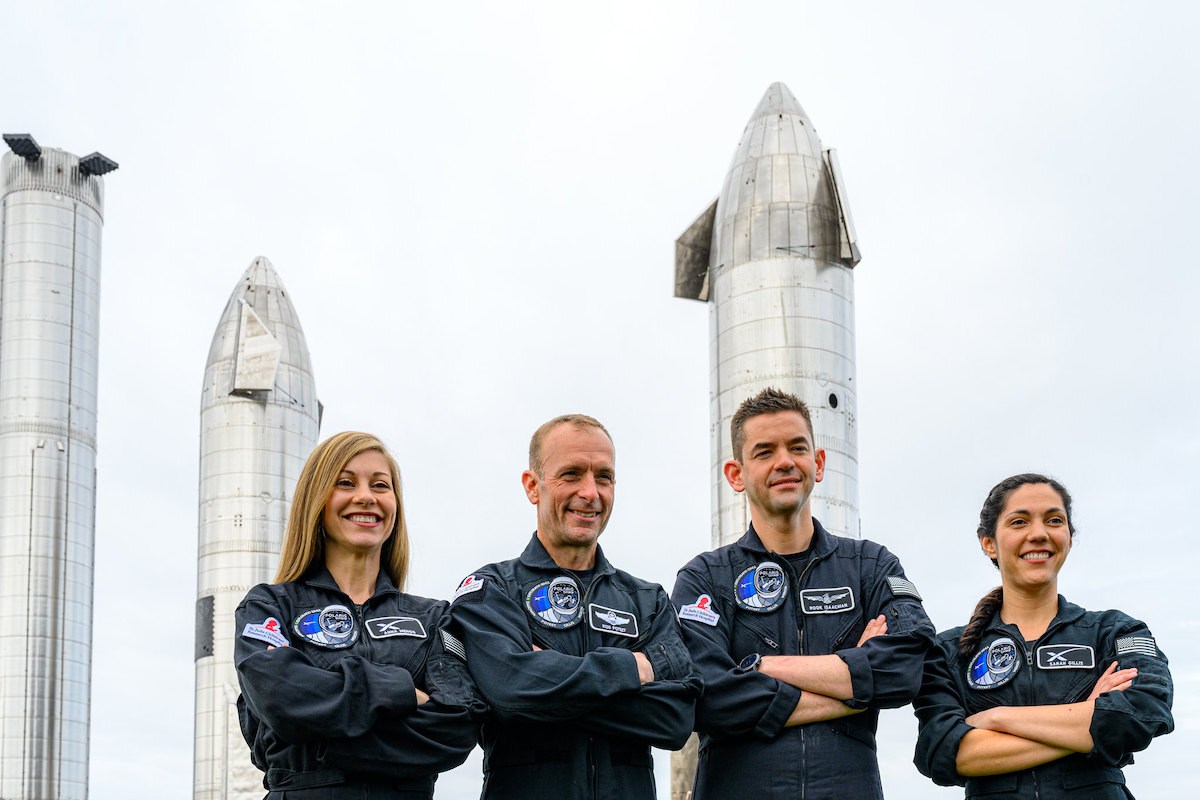
The four-person crew who will fly on the all-private Polaris Dawn mission — set to include the first commercial spacewalk and the debut of SpaceX’s extravehicular spacesuit — will begin training this month for their ride on a Dragon spacecraft to an altitude more than three times higher than the International Space Station.
Jared Isaacman, the billionaire businessman and pilot commanding the Polaris Dawn mission, said in a recent interview that the crew would begin training after SpaceX completed a busy stretch of crew rotations to and from the space station.
SpaceX launched a Dragon flight with four commercial astronauts to the space station April 8. That mission, flown for the Houston company Axiom Space, returned to Earth April 25. A NASA crew mission launched on a SpaceX Dragon capsule April 27 to begin a four-and-a-half month expedition on the station, followed by the return of an outgoing crew on a different Dragon spacecraft May 6.
The four-week campaign was the busiest stretch of operations for SpaceX’s human spaceflight program. Less than two years have elapsed since the company’s first crew mission for NASA.
With those missions accomplished, Isaacman tweeted Sunday that the Polaris Dawn crew will begin training later this month for their pioneering flight, which aims to reach farther from Earth than humans have flown since the last Apollo moon mission in 1972.
In an interview last month, Isaacman revealed new details about the Polaris Dawn mission, the first of three flights he has booked with SpaceX, culminating in a mission aboard the company’s huge next-generation Starship rocket. Isaacman and SpaceX announced the three-flight Polaris Program in February.
Details about the second and third Polaris missions — on a Dragon spacecraft and on SpaceX’s Starship, respectively — have not been released.
The Polaris Dawn mission is scheduled for launch no earlier than November.

Isaacman will be joined on the Polaris Dawn mission by Scott “Kidd” Poteet, a veteran fighter pilot and retired lieutenant colonel in the U.S. Air Force. Two SpaceX employees, Sarah Gillis and Anna Menon, will also fly to orbit on Polaris Dawn.
Gillis and Menon supported the recent Axiom and NASA crew missions as part of SpaceX’s ground team. With those jobs now complete, the four Polaris Dawn crew members are available to begin their “jammed” training schedule, Isaacman said.
SpaceX is developing a new spacesuit designed to protect crew members on spacewalks. Isaacman’s crew will be the first to test the new suit on an excursion outside the Dragon spacecraft.
The design and appearance of the suit haven’t been revealed by SpaceX. The suit is an upgrade of the custom-fitted pressure garments worn by astronauts during launch and re-entry inside the Dragon spacecraft. Those suits would pressurize to keep the crew alive in the event of an emergency.
Isaacman said there are changes in materials on the upgraded suit to better shield astronauts from micrometeoroids and orbital debris — tiny space rocks or space junk fragments that could strike a crew member while they are outside the spacecraft on a spacewalk.
The new suit will look more like SpaceX’s in-cabin pressure suits than the NASA’s older, bulky spacesuits used for excursions outside the International Space Station, Isaacman said.
“You’re adding lots of redundancies in the suit that don’t exist today, since it’s more last line of defense,” Isaacman said, referring to the differences between SpaceX’s current suit and the new extravehicular spacesuit. “You have a new visor, new seals, then mobility, joints everywhere for increased mobility and dexterity in the fingers and such. I think, visually, it will be more along the lines of what it currently looks like, but very much like a new suit.”

Isaacman said the crew will wear the new suit during launch and re-entry because there’s not enough room inside the capsule to carry the suit and change into it once in space. Two of the Polaris Dawn crew members will actually head outside for the spacewalk — also known as an EVA, or extravehicular activity.
SpaceX’s new spacesuit will be the first fresh U.S. design capable of a spacewalk since the current generation of NASA suits debuted in the 1980s, early in the space shuttle program.
NASA is in the final stages of selecting a company to develop and provide spacesuits for the agency’s Artemis missions to the moon. SpaceX’s suit may be a candidate for the contract.
The Polaris Dawn crew members know the details of SpaceX’s Dragon spacecraft, so much of the training will focus on preparing for the spacewalk — the first EVA to be performed by non-government astronauts or cosmonauts.
Like NASA’s spacewalk training, preparations for the Polaris Dawn mission will include practice runs underwater, allowing the crew to get a feel for how the suit handles without the pull of gravity, Isaacman told Spaceflight Now last month.
SpaceX is also adding suspension rigs to the company’s training facility in Hawthorne, California.
“We can work inside the Dragon simulator and kind of practice the egress, where the mobility aids are, and such,” Isaacman said. “So it’ll be combination of Hawthorne and some actual underwater training.”
Isaacman, 39, founded Shift4 Payments, an online payment application, and has a net worth of $1.3 billion, according to Forbes.
Besides the spacewalk, the Polaris Dawn crew will test a laser communications system to link up with SpaceX’s Starlink internet network. The mission will also collect data on the radiation environment in the Dragon spacecraft’s orbit, which will reach into the lower segments of the Van Allen radiation belts.

Isaacman commanded the Inspiration4 mission last September, the first all-private crew mission to low Earth orbit. Isaacman and his three private citizen crewmates spent three days in orbit on SpaceX’s Dragon Resilience spacecraft, performing experiments and supporting fundraising efforts for St. Jude Children’s Research Hospital.
Like Inspiration 4, the Polaris Dawn mission will launch on a Falcon 9 rocket from pad 39A at NASA’s Kennedy Space Center in Florida. Polaris Dawn will spend up to five days in orbit, Isaacman said.
Isaacman will likely fly again on the Dragon Resilience spacecraft, one of four crew capsules in SpaceX’s fleet.
“It’s a very high probability it will be Resilience,” he said.
SpaceX will remove the cupola viewing window added to the nose of the Dragon Resilience spacecraft for the Inspiration4 mission.
“You’re going to switch that back to basically a docking mechanism because that’s going to be going hatch for egress and ingress during the EVA,” Isaacman said.
The Polaris Dawn mission will likely target a peak altitude of about 870 miles (1,400 kilometers), higher than NASA’s Gemini 11 mission crewed by commander Pete Conrad and pilot Dick Gordon in 1966, which set the altitude record for an astronaut flight in Earth orbit at 853 miles (1,372 kilometers), according to NASA.
“There’s very little reason to go much higher than 1,400 kilometers,” Isaacman said. “You’re just dramatically increasing radiation (exposure), and you probably won’t learn a whole bunch more from it. We’re already anticpating getting a lot of really good data after just a couple of laps at a 1,400-kilometer orbit. I don’t expect to go much farther than that.”
“We’re talking about adding a lot of cameras because it’s going to be a highly elliptical orbit,” he said. “If you just assume it’s 1,400 (kilometers), it’ll be like 190-by-1400. If you can get some good footage of that and just compress it, you’re going to have the Earth shrinking and increasing in size. I think it’ll be pretty cool.”
The Dragon capsule will fire Draco thrusters to lower its altitude before the spacewalk.
The spacecraft doesn’t have an airlock, so the spacewalk will require the entire capsule be depressurized in space. The crew members will float out of the hatch and remain tethered to the spaceship at an altitude of approximately 300 miles, or 500 kilometers, according to Polaris Program website.
“It will still be a pretty high EVA compared to anything in recent times,” Isaacman said.
Email the author.
Follow Stephen Clark on Twitter: @StephenClark1.
